America’s next leaders of the U.S. Agency for International Development (USAID), the U.S. International Development Finance Corporation (DFC), and the Millennium Challenge Corporation (MCC) have their work cut out for them. The COVID-19 pandemic has wiped out decades of gains in international development. For the first time since 1998, there will be a rise in global poverty that will push as many as 150 million people into extreme poverty by 2021’s end. The World Bank has estimated that reduced availability of health services and nutrition this year will lead to a 45 percent rise in child mortality. School closures have disrupted education in one form or another for more than 90 percent of the global youth population.
Developing countries bear the heaviest brunt of these and other consequences of the pandemic. But wealthier countries also have an enormous stake in helping them address those challenges successfully. We must help not just for humanitarian reasons but also because failing to do so will damage public health, economic well-being, and national security interests worldwide.
As President Biden selects a new cohort of leaders for America’s international development agencies, the world is watching closely to see what example America will set. The early nomination of foreign policy heavyweight Samantha Power to lead USAID—and the president’s decision to add the position of USAID administrator to the National Security Council—indicate that the U.S. is thinking seriously about its global development strategy.
A quiet revolution has been unfolding in international development, with new approaches yielding fresh solutions and generating additional resources.
Eventually, though, U.S. leaders and their counterparts in other wealthy countries will have to contend with the growing gap between international development needs and the political will to address them—especially as domestic needs have ballooned during the pandemic. In confirmation hearings for U.S. government agencies, Congress should ask how they plan to address it.
The good news is that a quiet revolution has been unfolding in international development, with new approaches yielding fresh solutions and generating additional resources. Unfortunately, public awareness is lagging.
Most Americans do understand the link between what happens abroad and at home. In 2019, 7 in 10 said it is best for the future of their country to take an active role in world affairs, and a near consensus—93 percent—have since agreed it is important for the U.S. to work to limit the spread of COVID-19 in other countries.
Yet, despite the need for international development assistance and wide support for it in principle, mustering sufficient resources has proved harder to achieve in practice. For instance, out of nearly $3 trillion in emergency funding allocated across multiple spending bills to address the coronavirus crisis domestically, Congress has provided $6.4 billion in emergency international assistance funding. While President Biden has proposed an additional $11 billion for international pandemic response efforts, it is far from a guarantee that Congress will approve this amount. And it does not begin to address the longer-term consequences of the pandemic that are essential for global economic recovery
How can we close the massive global gap between post-COVID-19 recovery needs in developing countries and the political will and financial resources available to address them? One way is to educate the public and Congressional leaders about more catalytic models of development that are now available.
Instead of old approaches in which a dollar’s investment yielded a dollar’s worth of services, it is increasingly possible to leverage international assistance to yield a much higher return.
Instead of old approaches in which a dollar’s investment yielded a dollar’s worth of services, it is increasingly possible to leverage international assistance to yield a much higher return. That might come in the form of using international assistance dollars to draw in private investors, building capacity to raise tax revenues within developing countries, and de-risking potentially game-changing innovations. While these models are now well known to international development professionals, they are less familiar to many government officials—including members of Congress—who make decisions about how the U.S. should spend its money.
This is not just speculation. Already, governments are embracing financing models that leverage public money to draw in additional resources. And there are still huge amounts of money left to tap, employing mechanisms like the following:
Domestic resource mobilization (DRM) is what national governments employ to increase their revenue, particularly through fair, effective, and efficient tax collection. When donor countries and other international organizations help and incentivize governments to carry out DRM more effectively, it also helps them to finance their own development needs.
At $5.5 trillion annually, DRM makes up the largest source of total resources available to developing countries (see Figure 1). Especially in countries with rising incomes and countries deemed ready to eventually “graduate” from foreign aid, helping governments cover their own development costs is one of the most sustainable practices to ensure long-term prosperity and independence from aid.

Donor countries and international organizations can help. They can provide, for example, technical assistance, which helps countries enhance their domestic resource mobilization and improve the cost-effectiveness of their traditional programs. One analysis showed revenue increases amounting to more than $20 for every assistance dollar invested.
External funders can also encourage lower-income countries to devote more of their own funds to development. Through its grants, the Global Partnership for Education, a multilateral organization that raises and allocates billions of dollars from donor countries, incentivizes developing country partners to spend up to 20 percent of their domestic budgets on education—a long-term investment in prosperity. As a result, GPE developing county partners increased their expenditure on education at a much faster pace than other developing countries between 2002 and 2016, and 70 percent have maintained their education budget at or above 20 percent of public expenditure, or steadily increased it toward that goal.
De-risking innovation can also help deliver greater bang for the buck. Host-country governments and the private sector are often not able to take the risks required to develop more cost-effective and scalable solutions. International aid can be leveraged to identify and test new approaches that can then be scaled up by government or the private sector.
A range of mechanisms have proven effective to promote innovation by creating incentives for improved outcomes. USAID’s Development Innovation Ventures (DIV) and Global Innovation Fund (GIF) both use tiered funding to cast a wide net for promising ideas, and then double down on those with the strongest results. The Grand Challenges for Development shine a light on the most pressing problems where better solutions are needed and draw in the ingenuity of nontraditional actors. And various pay-for-outcomes mechanisms, including development impact bonds, allow for flexibility while encouraging and rewarding greater cost-effective results.
Development finance is the use of public sector resources to catalyze private capital investments in developing countries. It can take many forms including direct equity investments, loans and loan guarantees, political risk insurance, and technical assistance to identify and accelerate investment projects.
Development finance institutions have been expanding in number and size in recent years to play this role. As of 2019, there were at least 17 major bilateral development finance institutions in the world, with a combined annual investment portfolio totaling more than $65 billion. In the United States, the 2018 BUILD Act, which passed with an overwhelming and bipartisan majority in Congress, combined the Overseas Private Investment Corporation with parts of USAID to create the DFC, which has new authorities for equity investment and a budget of $60 billion.
Development finance is most appropriate for large capital investments that—with the right incentives to reduce risk—can generate strong private sector interest. This typically includes large-scale infrastructure, energy, water, agriculture, and public health projects. Such investments create conditions that promote local and private sector-led economic growth and job creation.
Grant funding and development finance can be employed in tandem to de-risk innovation and achieve greater impact. For example, Zola Electric (formerly Off-Grid:Electric), a Tanzanian company that provides clean energy to low-income communities through a pay-as-you-go service based on mobile money, was the first to receive all three tiers of DIV funding. An initial $100,000 DIV grant allowed Zola to test this novel business model. Once the market potential was validated another $1 million grant supported the build-out of infrastructure for full-scale operations. Finally, a $5 million stage-three grant served to unlock the working capital from commercial lenders needed to scale. In addition to grant funding, an early loan from the Overseas Private Investment Corporation (OPIC, now DFC) further smoothed the transition to private financing, ultimately enabling Zola to raise more than $200 million in debt and equity from private sources. OPIC has continued to support dozens of other pay-as-you-go home solar companies, both directly and indirectly, with subordinated financing that has catalyzed private investment and created one of the fastest-growing markets across Africa.
Asset recovery involves finding the proceeds of corruption hidden in foreign jurisdictions and returning them to their country of origin. Asset recovery represents a huge opportunity to find needed development funds and sends a clear message to citizens that corruption is not being tolerated.
To be sure, it is often difficult to locate, reclaim, and disburse ill-gotten assets. For example, between 2010 and 2012, only $147.2 million in stolen assets was returned by OECD members, a scant fraction of the $20 billion to 40 billion each year that developing countries lose to corruption. As a result, there’s a great need to expand efforts to return stolen assets effectively.
The COVID-19 crisis has reminded us that we are not immune to dangers elsewhere in the world. 2021 could show the benefits of our global interconnectedness if economic recovery and growth, new vaccines and treatments, and other innovations worldwide accelerate recovery at home. The financing approaches described here are just a few examples of how incoming development leadership from the United States and other countries could stimulate these positive repercussions. It’s time to use them to their full advantage, to the benefit of Americans and people everywhere.
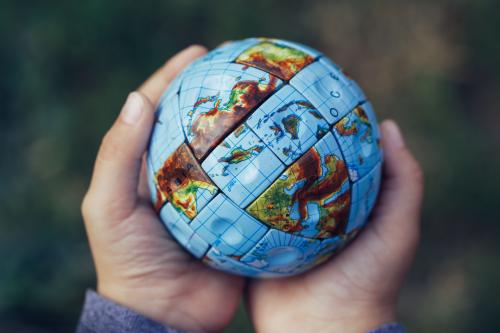
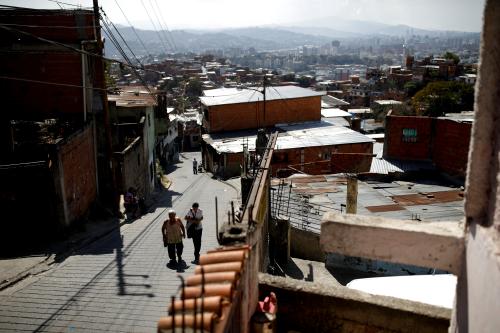
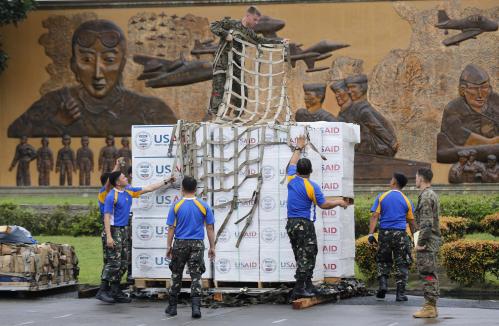
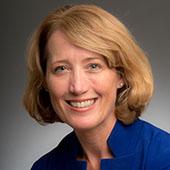

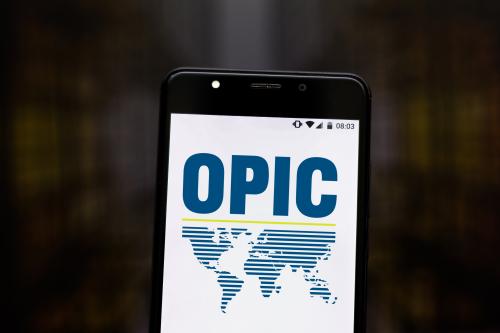
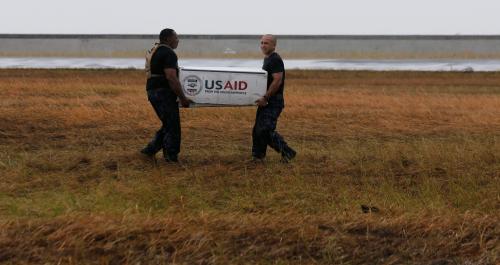
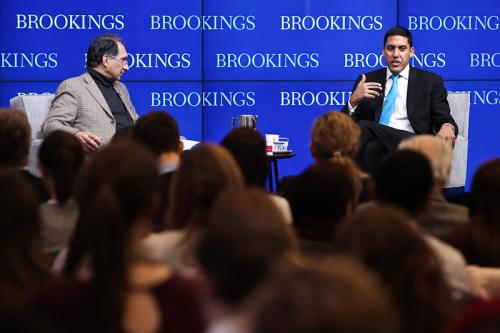
Commentary
The quiet revolution: What Congress should know about foreign assistance today
February 8, 2021